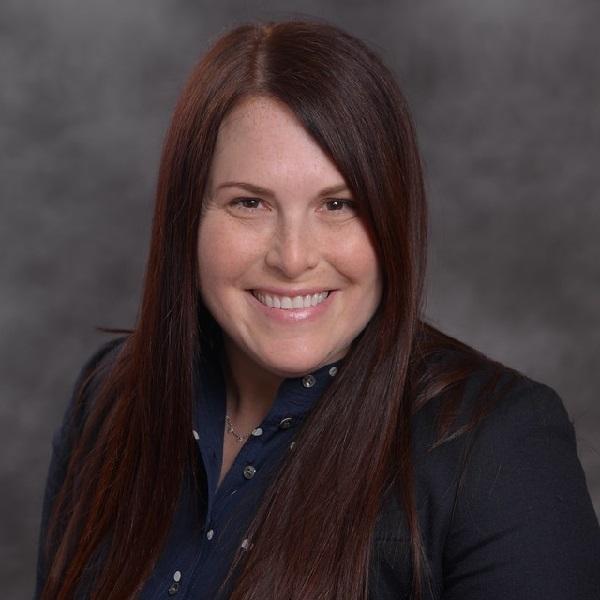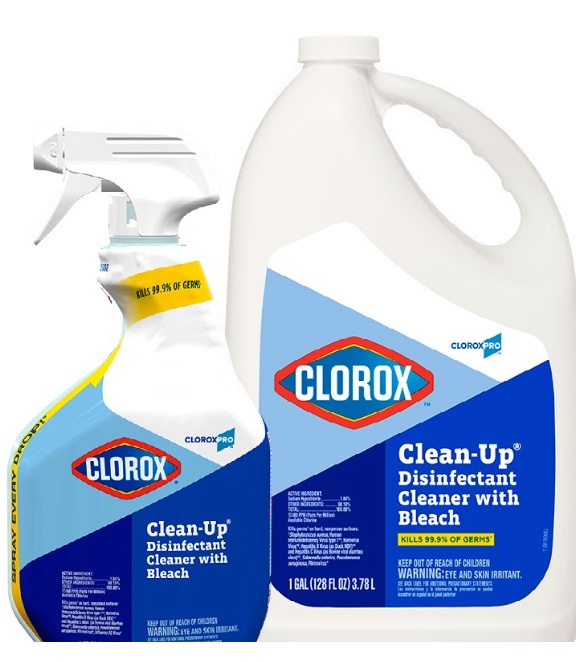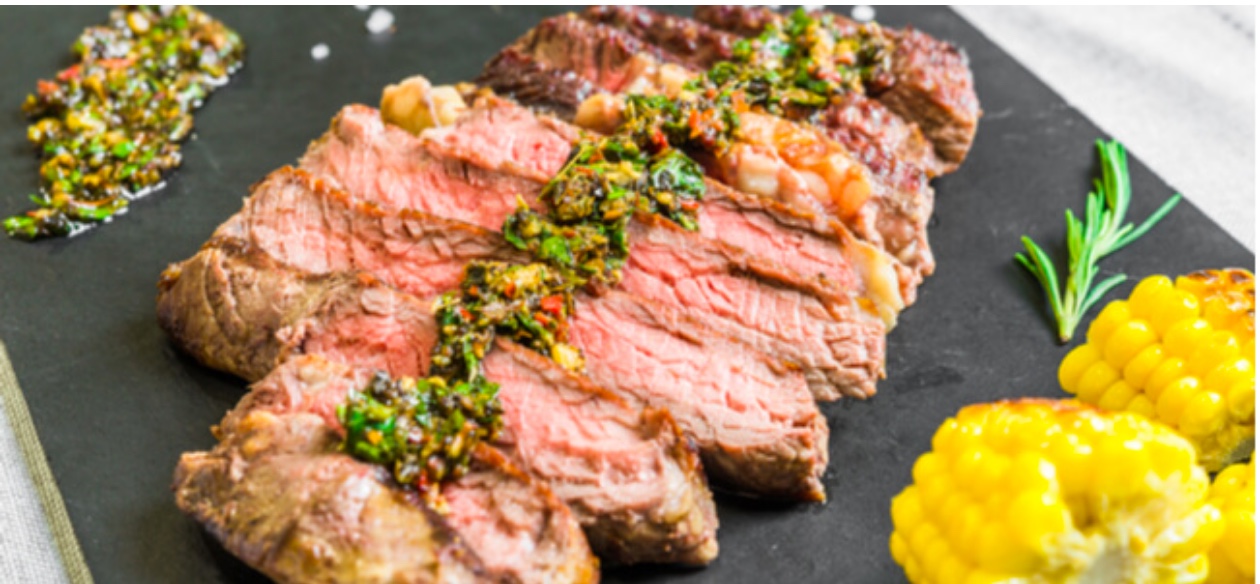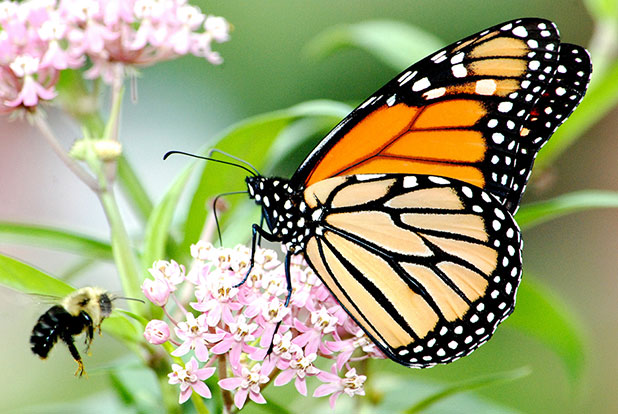A Pediatrician's Advice on Preparing Your Child for a Smooth Re-Entry to School
- Details
- Written by Joanne Wallenstein
- Category: Health
 Dr. Samantha LoweAs Scarsdale Schools plan their re-opening, many parents are considering whether or not to send their children for in school learning, considering how well their children will do wearing a mask and thinking about how to reduce their own and their children’s anxiety.
Dr. Samantha LoweAs Scarsdale Schools plan their re-opening, many parents are considering whether or not to send their children for in school learning, considering how well their children will do wearing a mask and thinking about how to reduce their own and their children’s anxiety.
We asked Dr. Samantha Lowe, a pediatrician with White Plains Hospital Physician Associates, to provide some information to help parents prepare their children for a safe and smooth re-entry to in-person learning.
Why does the AAP recommend that children return to school?
The AAP recognizes that children learn best when physically present in the classroom. Children also get much more out of the in-person school experience than academics. They also learn social and emotional skills, get healthy meals and exercise, and receive mental health support and other services that cannot be easily replicated online.
Given that this is the first time we face this situation, what research is available on the effects of masks and social distancing on children?
The research is limited at this point as this is so new to the medical community and the community at large. What is known is that keeping children completely separated from their peers and loved ones for significant amounts of time can lead to general anxiety, depression and social anxiety. At this point, the only way to keep people connected in person is to have them wear a mask and stay socially distanced. This outweighs any fearfulness or discomfort the mask, or not being close to others, may can cause. Children are very quick to habituate to new situations, and while mask wearing and social distancing might initially instill fear as they see this is the new normal, they will usually adjust quite quickly.
As a parent, if you do have a choice, how should you assess whether or not to send your child to school or learn virtually at home?
I would recommend that parents consult with their pediatrician or family physician to weigh the risks against the benefits of returning to in-person school based on their child’s individual health conditions and family circumstances.
Do you think young children can successfully wear masks?
Kids are not used to wearing masks all day, so choosing the right mask is extremely important and is the best way to assure that kids will be compliant. I prefer surgical masks for children because they are light, disposable, and don’t annoyingly tug on the ears of little ones. The best mask for your child is the one they will not take off, that they can breathe in, that covers their nose and mouth and goes over the chin properly. Face shape and size will also determine the appropriate covering for your child. I also suggest a reusable mask with a filter that can be replaced daily without needing to wash the covering itself every day. Also, doing a fit test is key. It’s the same as when you get them a new pair of sneakers, ask, "Are you sure these are going to fit you? They aren’t too small or too big?”
Given where New York’s infection rate now stands, do you think it is necessary for children to wear masks and stay six feet apart?
YES until further notice.
How should parents speak to children about the new protocols?
Parents should be honest about what is going on in the world and what their new school environment will be like. It should be explained to children in an age appropriate way, as calmly and with as much detail as appropriate. It is important that children take ownership of their own health and understand that following instilled safety protocols is part of that.
How can they ease children’s anxiety?
Anxiety over the virus is very real. You want to provide your children with appropriate guidance as to how to manage themselves safely while not making them nervous. My best advice is to communicate with your school district and get as many facts as you can. A lot of kids are anxious, as they have been living in a cocoon these past few months. The more facts you have as a parent, the more you can help calm their anxiety for the best chance of a successful school year.
What should they advise their children about staying safe at school?
It is important that children understand what is expected of them in school to keep themselves and their peers safe. Explain what will be different and what will be the same about their school day this year. Empathize with children that masks can be uncomfortable, but reinforce that they are a very important step in keeping everyone safe. Make sure they understand what being socially distanced means and, as much as they want to be close to their peers, why it is important. Confirm that they are clear on the bathroom and lunch protocols for their individual school.
What should parents do after school to fill in for what children are missing in the academic, social and physical experience?
To limit exposure and transmission, children may be placed in small groups or “pods” and even remain in the same classroom all day, even for lunch. That will drastically cut down on the number of steps during the day, and limit the opportunity to expend some much-needed energy. Distance-learners face a similar issue. In many districts, physical education class is still a question. Daily exercise is going to be more important than ever. I advise that parents ask schools what they will do to ensure that kids get adequate body movement and brain rest during their day, which is essential to keeping hyperactivity at bay. I would really enforce getting some movement when kids get home, and discourage computer or screen time. They need to get outside and play and really move their bodies, not only for physical benefits but also for emotional benefits.
What’s your feeling about sending children to after school programs that may not have as stringent safety protocols?
Parents should fully understand what the safety protocols are for any and all programs that they are sending their children to. Unfortunately, this is not a perfect science and programs and schools alike are interpreting CDC and local DOH data to provide what they think is a safe environment for children. If you are not comfortable with a supplemental program and feel that it is placing your children, your family and others at too much risk, it might be better for you to not send them. If sending them to the program is not a necessity and is causing more anxiety for you as a parent, consider other alternatives for them.
Community Physicians Question the Safety of Elementary School Reopening Plans
- Details
- Written by Joanne Wallenstein
- Category: Health
 This letter was shared with Scarsdale10583 by a group of Scarsdale mothers who are doctors.
This letter was shared with Scarsdale10583 by a group of Scarsdale mothers who are doctors.
Dear Scarsdale School District Administration,
We are writing to you as concerned mothers and physicians on behalf of our children in the Scarsdale elementary schools. We write to you with several goals in mind. First, we want to emphasize the importance of following evidence-based risk mitigation. Second, we would like to raise concerns about the disinfection methods that the district plans to employ, particularly during the break between the AM and PM cohorts. Third, we would like to offer suggestions for how to make the elementary schools as safe as possible for both students and teachers. And lastly, we would like to offer our gratitude and assistance.
To our relief, young children do not appear to be major vectors of COVID19, however we know that sending our children to school during a pandemic involves some degree of risk. Fortunately that risk can be heavily mitigated with good ventilation, masks, and basic hand hygiene. We believe that the Scarsdale elementary schools can reopen safely, and we support the American Academy of Pediatrics in their recommendation for children to be physically present in school as much as possible.
Having reviewed the Scarsdale School District's re-start plan, we are concerned about the proposed disinfection process and the absence of a ventilation plan. Many popular disinfection practices create an illusion of safety but can actually pose significant risks to children, who inhale, ingest and absorb these products at much higher levels than adults due to their smaller body size, increased respiratory rate, higher body fat composition, and their tendency to put fingers and other objects in their mouths. In addition, children are still developing physiologically and are more subject to the effects of toxic substances. We have reviewed the disinfection products listed in the restart documentation and are aware that some of the ingredients are known to increase the risk of asthma. We are also concerned that some of the ingredients pose risks to other developing organs and systems. If we understand the current plan correctly, the PM cohorts may be entering classrooms shortly after the cleaning/disinfection process finishes.
Unlike many other viruses, COVID is spread primarily through the air, not via surface contact. Healthy lungs are our first line of defense against COVID. We risk undermining that barrier if we expose our lungs to irritants. Wiping down high touch surfaces like door handles is prudent, but the obsessive disinfection of most or all surfaces is unnecessary and potentially dangerous. Additionally, while this should go without saying, cleaning products should be kept under lock and key at all times to prevent accidental ingestions. Statistically speaking, a young child is far more likely to be sickened or killed by accidental poisoning than by COVID19. Early data already shows that accidental poisonings have increased along with the increased use of disinfectants during this pandemic.
Good ventilation appears to be key in preventing COVID19 transmission. Fortunately, good ventilation is inexpensive and easy; it involves opening the windows and turning on a fan to help circulate the air. Leaving a classroom idle with the windows open and a fan blowing is the safest, easiest way to disinfect a classroom. Doing so is certainly preferable to dousing a school building with industrial chemicals. Outdoor learning and play is also an easy way to keep everyone safe as COVID19 appears to fare poorly outdoors. We request full transparency with regards to the School District’s plans for ventilation and disinfection in the elementary schools so that families can better assess the risk benefit ratio of sending their children to school.
As parents, we are entrusting the Scarsdale School District with our most precious, vulnerable assets during unprecedented times. As physicians, our first duty is to do no harm. We ask that the elementary schools take the same approach. We are concerned that under the AM/PM model, the PM cohort would suffer disproportionately in terms of their exposure to industrial disinfectants. In theory, the PM cohort may also face a higher risk of exposure to COVID19 if the classrooms are not properly ventilated between cohorts. None of us wants our own children to be in the PM cohort, and we feel an ethical obligation to advocate for all of the children in our district. Unfortunately the full day AA/BB model employed by other districts comes with its own set of limitations and challenges. For example, young children (and some adults) are unlikely to tolerate masks all day. Children and adults are less likely to tolerate the climate extremes inevitable in having open windows in the classrooms if the school days are long. Lunch time presents a logistical challenge. And having two days of school punctuated by five days without school seems undesirable for kids and hugely problematic for parents.
While we acknowledge that no model is perfect, we believe that a preferred elementary school model would involve a single cohort of students in the school per day (this could be any of multiple A/B plans, including a 6 day model of 3 on 3 off, alternating weeks, etc.). We believe that this plan is advantageous for the teachers as well because it would eliminate the need for teachers to evacuate buildings in the middle of the day while the buildings are being cleaned between cohorts, it would also reduce their exposure to disinfectants, and it would reduce their likelihood of being exposed to COVID19. These teachers are going to be the ones teaching our children. We believe that it is our fundamental responsibility to prioritize their safety as well.
We know that our children will have unusual school experiences this year because of COVID19, but we are also confident that the Scarsdale community can rise to the occasion. We want to offer our assistance to you as physicians, parents, and in some cases, Scarsdale alums. We realize that now is an extraordinarily challenging time to be a teacher and administrator. We are truly grateful for everything the School Board, the administration, and the teachers are doing on behalf of our children.
We of all people empathize with teachers who are fearful. As physician mothers, we never imagined that we would be asked to put our own lives at risk while also caring for and educating our children during a pandemic. Like millions of other essential workers, we have made tremendous sacrifices, and we will continue to do so. To that end, we ask our school district to partner with us: We are here to assist you in any way possible.
Respectfully,
Dr. Deborah Hemel
Dr. Beth Rapaport Pass
Dr. Leah Blank
Dr. Suzanne Arinsburg
Dr. Hope Stephens
Dr. Doreen Chung
Dr. Monika Desai
Dr. Oksana Lekarev
Safe Entertaining Guide from White Plains Hospital
- Details
- Written by Joanne Wallenstein
- Category: Health
 As the summer season approaches, safety should be at the top of the menu! Many local restaurants are beginning to welcome sit-down guests once again while effectively protecting both staff and patrons. Brian Mahon, co-owner of Lilly’s and the Hudson Grille restaurants, both recently opened for patio dining on Mamaroneck Avenue in White Plains, shared some of the safety centered strategies in place there – all smart ideas for home barbecues and parties too:
As the summer season approaches, safety should be at the top of the menu! Many local restaurants are beginning to welcome sit-down guests once again while effectively protecting both staff and patrons. Brian Mahon, co-owner of Lilly’s and the Hudson Grille restaurants, both recently opened for patio dining on Mamaroneck Avenue in White Plains, shared some of the safety centered strategies in place there – all smart ideas for home barbecues and parties too:
Take It Outside!
Mahon says his restaurants’ shared 5,000 square foot patio space is organized for social distancing and allowing for natural air flow. You can follow suit at your party by spacing picnic or patio tables at least 6 feet apart and limiting to 4 diners per table.
Designate Cooking Duties
The CDC says that up to 80% of all illnesses may be spread by contaminated hands. To reduce that risk, Mahon suggests having one person only on the grill, another on salad duty, and yet one more on dessert etc... Use clean gloves to handle and serve all food, and wear a face shield and mouth covering while preparing food for others – all part of the new normal at Mahon’s restaurants. Guests should not feel shy about wearing a face covering at the table before and after their meal. They more comfortable and safe they feel, the more they will enjoy their experience!
Don’t Share!
When planning your menu, consider simple, individual serving foods like burgers, grilled chicken, hot dogs and corn on the cob. Bowls of salad and chips, which attract lots of hands, are a definite no-no in this climate – stock up on some single-serve chip bags if they are a must at your get-together, and pick up some condiment and salt and pepper packets.
BYO… Glasses?
Allow your guest to bring their own wine glasses or beer mugs if they aren’t fond of drinking out of disposable cups. “We want to do whatever it takes to make our customers feel safe and comfortable,” he says. Same goes for bottle openers, as the less you need to pass around, the better. Keep Sharpies on hand to mark all cups and plates.
Hype Up the Hygeine
Don’t forget the must-have table decoration for the Summer Entertaining Season: hand sanitizer! In addition, Mahon has dispensers outside of the bathroom and near all entrances and exits. Stash all hand towels, and purchase a stack of decorative throwaway hand towels for the bathroom.
Get a Little Creative
“With Zoom gatherings taking off, don’t be afraid to try a virtual barbecue cook-off with friends and family, so you can still have bragging rights,” suggests Mahon. If anything, coronavirus has sparked some new ideas for current takeout offerings, including brunch boxes with mimosas, and coming soon: marinated burgers and ribs in a box, with instructions for how to cook them.
Ready to try a little gourmet creativity yourself? Tyler Jacobs, executive chef at Lilly’s and the Hudson Grille, shares how to season your dishes like a pro. Check out his recipes for Chipotle Mayo for Grilled Corn and Chimichurri Steak Sauce below.
Chipotle Mayo for Grilled Corn on the Cob
Ingredients:
2 cups mayonnaise
1 cup of softened, whipped cream cheese
2 oz. finely chopped cilantro
Juice of 3 limes
3 oz. chipotle peppers in adobo
Grated Parmesan cheese
Salt and pepper to taste
To make it:
1. Combine all ingredients in a mixing bowl, and combine evenly.
2. Grill corn to desired tenderness, coat with dressing.
3. Sprinkle corn with Parmesan cheese.
4. Refrigerate leftover dressing for future use.
Chimichurri Steak Sauce
Ingredients:
3 oz. cilantro
3 oz. parsley
2 oz. dry oregano
3 tbs sherry vinegar
2 tbs finely chopped shallots
2 tbs finely chopped garlic
2 tsp red pepper flakes
1 cup olive oil
To make it:
1. Combine all ingredients in jar or container, shake well.
2. Spread on cooked steak, or serve on the side.
Helping Our Polinators
- Details
- Written by Joanne Wallenstein
- Category: Health
 Bees, birds and butterflies are vital to the health of our planet, and they need our help. Without pollinators, most of the Earth’s plants would not produce viable seeds and fruit which form the foundation of the food chain.
Bees, birds and butterflies are vital to the health of our planet, and they need our help. Without pollinators, most of the Earth’s plants would not produce viable seeds and fruit which form the foundation of the food chain.
Here are some easy steps to take to create a pollinator-friendly yard:
Plant native plants that attract pollinators
Native plants evolved alongside native wildlife and provide them with the right pollen and nectar for food as well as with protection and places for their young to grow. When planting flowers, make sure that a variety of plants are selected so that flowering takes place from spring through the fall.
Most nurseries sell plants that are clearly marked as attracting specific pollinators as well as specifying bloom time and sun requirements. Some examples of native plants that attract pollinators are: eastern bluestar, wild columbine, wild geranium, creeping flox, foam flower, anise hyssop, butterflyweed, common milkweed (very important for monarch butterflies) and great blue lobelia. For a more extensive list, visit SUNY’s Native Plant Center.
Avoid using pesticides
Pesticides not only kill pollinators on contact but also are absorbed by plants, thereby making their pollen poisonous. There are many organic products readily available that serve the same purpose as pesticides but are not harmful to wildlife and humans. For example, corn gluten can be used as an effective fertilizer and weed preventer, and milky spore can be used to prevent grubs. Native plants, which are best suited to our climate and terrain, are less susceptible to drought and disease so it’s even easier to avoid pesticide use when caring for them.
Reduce lawn size by creating flowerbeds
Lawns made up solely of grass are wastelands for pollinators. By carving out sections of grass and replacing them with pollinator-friendly flowerbeds, you are creating areas that are both beautiful and havens for pollinators while costing less to maintain than lawn care. (Better yet, allowing such pollinator favorites as white clover, dandelions and violets grow in your lawn--even in limited areas-- creates a friendlier yard for pollinators while acknowledging that you are helping pollinators by having a less than perfect lawn.)
Provide water
Just like any other animal, pollinators need water. Supplying water can be as simple as placing a shallow dish or saucer--that can be easily emptied and refilled --anywhere in your yard. Birdbaths are available in many sizes and materials so that they, too, can be easily maintained.
Supply shelter and nesting sites
Trees and larger shrubs are important for nesting birds. Make sure that pruning waits until late fall or early winter, after nesting season. Keeping some of the yard wild provides an undisturbed place for bees and butterflies to nest. Having a patch of bare ground and leaving leaves --or mulched leaves--on the ground provide places for them to lay their eggs and for larvae to overwinter. Even if these areas are small, every small area throughout a neighborhood adds up!
Creating a pollinator-friendly yard benefits our environment while adding beauty to the neighborhood—and it’s a great activity to share with our children. For more information, visit the US Forest Service or the Cornell Cooperative Extension.
If you have any questions or comments, contact the Scarsdale Conservation Advisory Council.
It’s OK That You’re Not OK, Community Discussion via Zoom Thursday, July 9 at 10:00 am
- Details
- Written by Joanne Wallenstein
- Category: Health
 The Scarsdale Safe Coalition and Scarsdale Edgemont Family Counseling Service invite you to participate in a virtual discussion about coping during periods of grief and loss. The discussion will take place via Zoom on Thursday, July 9th at 10:00 a.m. and will be led by SFCS Family Therapist Judi Townsend, MFT, PA-C, MPH. The discussion will include elements from the book "It's OK That You're Not OK" by Megan Devine.
The Scarsdale Safe Coalition and Scarsdale Edgemont Family Counseling Service invite you to participate in a virtual discussion about coping during periods of grief and loss. The discussion will take place via Zoom on Thursday, July 9th at 10:00 a.m. and will be led by SFCS Family Therapist Judi Townsend, MFT, PA-C, MPH. The discussion will include elements from the book "It's OK That You're Not OK" by Megan Devine.
During the COVID-19 pandemic, many of us have experienced some form of loss. Now more than ever we need to feel connected to our friends, neighbors and community. Building attachment among community members is not just a way to cope with isolation but it is also a key protective factor in building community safety. The discussion will cover topics including:
-Death versus ambiguous types of loss
-Societal and cultural responses to loss
-The power of being present
The community book read, and discussion is an opportunity to explore a topic that is relevant to us all right now. The format will be discussion oriented, therefore this event will not be recorded or rebroadcast. All community members are welcome to join. Having read the book is not a pre-requisite for participation, however the book can be downloaded or purchased at your favorite online outlet or bookstore.
An RSVP is required to participate in the discussion. Please indicate your interest in participating by emailing Joan Caputo at jcaputo@sfcsinc.org by Tuesday, July 7th and a Zoom link will be sent to you.
For more information, please contact Lauren Pomerantz, LCSW at lpomerantz@sfcsinc.org.














